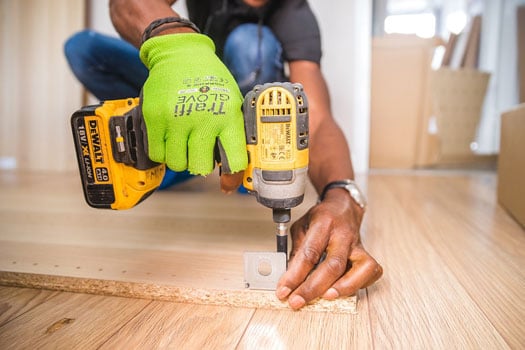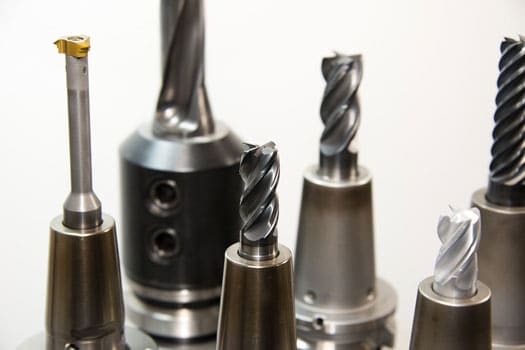
Discover our Selection of the Best Drill of December 2024, including the Top 10 Sales in December 2024 on Amazon!
No products found.
How to select a drill?
How to choose your drill? What are the most popular types of drills? Find all the answers below!
The drill is a very useful tool, which allows you to drill holes in different materials in a short time. There are different types on the market with different characteristics, but before analyzing the factors that are important in selecting a drill, we want to make an important distinction. Although they are similar tools, drills differ from screwdrivers and screw drills, to which we have actually dedicated separate purchase guides.
The power of the drill
The power factor is critical in the choice of a drill, as it allows us to determine the type and intensity of work that can actually be done with the tool in question. Power is therefore an index expressed in Watts, with values ranging from a few hundreds to over 2000. It may be obvious that, a higher power corresponds to a more robust and powerful drill, capable of effectively drilling different types of materials in a relatively short time.
It should not be overlooked that drills are powered in wired mode and therefore have much more powerful motors than other do-it-yourself tools that run on batteries (such as, for example, the screwdriver or screw drill): they are therefore the ideal tools for difficult drilling work, on hard materials that require a high power to be drilled, such as concrete for example.
The power required must be considered according to the type of work to be performed and the frequency of use. What power should a drill have? For a better overview, you may consider the following classification:
- Up to 500 W: drills suitable for light-duty domestic work, such as drilling in materials like wood and plastic;
- Up to 750/850 W: medium-power drills with a high degree of versatility, suitable for medium-duty work, such as drilling wood, concrete and steel, but with diameters and hole depths not too large;
- From 900/1000 W: this category includes all high-performance drills capable of withstanding demanding jobs and drilling concrete, metals and wood for large diameter deep holes.
Note that a drill with an absorption of 1000 W provides an effective power of 530 W. Finally, we would like to point out that it is not only the power that determines the efficiency of a drill in action: you must also consider the other technical characteristics that we will see in the following paragraphs.
The speed of the drill
Speed is a very important factor to consider when finding the right drill. The speed of the motor influences the quality of the work that the tool is able to do in terms of versatility, power and precision. Quick drilling not only reduces working time, but also allows you to adapt to different types of materials in order to obtain precise and satisfactory work. Let’s examine in detail the factors to be taken into account regarding the speed of a drill:
- RPM: This unit of measurement describes the number of revolutions per minute that the drill bit mounted on the device is capable of performing. The number of revolutions per minute goes hand-in-hand with the increase in power. The most powerful models reach about 3000 RPM, spread over multiple adjustable speeds, while the most basic models have a unique speed, which can vary from 1000 to 2500/3000 RPM and cannot be modified by the user. From this point of view, the choice must be made according to the type of application you wish to use the drill for, in particular according to the materials to be drilled;
- Adjustable speeds: the ability to choose between different speeds is important to adapt the speed to the material to be drilled, or to increase gradually for jobs that require more care. The most sophisticated models used by professionals have many adjustable speeds, but most amateur models tend to offer a choice of two speeds. Sometimes there is a mechanical gearbox, which is a subtle feature that only characterizes models in the higher price range;
- Changing the direction of rotation: the ability to change the direction of rotation of the drill, a useful feature for various reasons. First, because it is sometimes necessary to release the drill bit from materials that are particularly difficult to work with that could block the end of the tool making it impossible to move in the same direction, and second, because it allows the drill to be used to screw and unscrew, if combined with the appropriate bits.
The Drilling itself
The following parameters must be considered to ensure the purchase of a drill suitable for your needs, whether you are an amateur or a professional.
- Percussion: A percussion drill (also known as a “knocker”) makes a double movement in which the drill turns and hits the surface to be drilled. The simple presence of this function allows the tool to handle a wide range of materials, including cement and concrete. The percussion frequency is also important and is expressed in strokes per minute: the most robust and powerful models can reach up to 50,000 strokes, while those for less demanding work can be characterized by about 20,000 strokes per minute.
- Drilling diameters: the type of drill (i.e. whether it is a percussion drill or not) determines the range of materials it can work with. The superior models, located in the high price range, have maximum drilling diameters that vary according to the speed at which the drill operates and range from 0.3 to 0.6 inches for metals, from 1 to 1.6 inches for wood and from 0.5 to 0.8 inches for concrete, while the simpler models stop at a maximum of 0.3 inches for metals, 1 inch for wood and 0.4 inches for concrete.

The structure of a drill
The structure is critical in choosing the drill best suited for your needs because it determines the practicality of use of the device, which must adapt to the time and type of work to be performed and meet the specific comfort needs of the user. It should also be kept in mind that an appropriate structure is fundamental not only for a final result in line with expectations, but also for safety reasons. Let us examine in detail the structural characteristics to be taken into account when selecting a drill:
- Ergonomics: the best that you can do is to check that the drill has an ergonomic handle that is comfortable, flexible and preferably covered with non-slip materials, so that the grip is safe and easy to use in all conditions, even with moist or damp hands. It is also important to check that all the controls are easy to reach with your fingers.
- Spindle: this is the rotating shaft on which the various bits and tools are fixed and which, even for the less experienced, matches the metal part that surrounds and clamps the bits. The spindle can be rack-and-pinion (to be closed with a special key) or self-locking (not requiring manual closing), and this structural difference affects the practical use of the drill since the first type is considered more accurate while the second is more practical and faster;
- Weight: it is important to choose a lightweight drill so that the user does not get tired if he has to hold it for a long time. It should also be taken into account that lighter and more compact models are generally equipped with less powerful motors, and are therefore suitable for daily and less complex work, while more powerful drills necessarily involve a more robust structure;
- Double handle: some models are equipped with a double handle, which provides a firmer grip for better control during drilling;
- Continuous operation: some models have an integrated button that allows you to work without interruption without having to manually press the button, which is very convenient for long jobs.
Accessories that go with it
A drill that already includes a good number of spare parts and/or additional accessories not only offers an advantage in terms of economic investment, but also the possibility of using a tool with greater versatility. Many drills on the market include accessories, here is a list of the most common ones:
- Depth gauge: this is a metal rod that allows you to measure the depth of the hole you are making and allows you to get more accurate work;
- Additional handle: On the most powerful drills, one handle is not enough, which is why some models use a second handle, sometimes adjustable, that allows you to hold the drill firmly during heavy work;
- Drill bit set: each material or hole type requires a particular bit type, some bits are sold in a bit set;
- Case: a very useful accessory that allows you to store the drill and all the accessories that go with it and transport them effortlessly.
Some products may include actual accessory kits that can have more than fifty different drill bits, but most drills on the market do not include drill bits (which must therefore be purchased separately). Also remember that many devices (especially those of a certain quality and brands that also produce other DIY tools) allow you to purchase additional accessories that extend the function of your tool beyond that of a simple drill.
The materials used to manufacture it
Although the materials used to manufacture a drill are standard, i.e. plastics for the machine body and metal alloys for the different drill bits, you must always check the quality and strength of these components, not only to ensure a durable design and good performance, but also to be able to use your tool safely.
The quality of the drill bits is probably the most important aspect to consider: if they are inadequate, they will not be able to do the drilling work.
Remember to check the quality of the materials used to cover the handle, which are usually rubber or silicone: they must be comfortable to touch, non-allergenic and able to provide a firm and comfortable grip throughout the drilling process.
Which brand to choose?
When it comes to buying a drill, you have a wide range of brands to choose from, many of which specialize in a wide range of tools for DIY and manual work professionals. We advise you to go to reliable and well-established companies in the area, in order to be guaranteed to buy an efficient and safe tool, and to avoid problems in the after-sales phase. Among the most popular and sought-after brands are Black & Decker, Bosch, Makita, Einhell and Hitachi.
What is the price range?
There are cheap drills on the market with a price of about 50 €, up to models that can exceed 400 €.
Our Selection of the Best Promotions on Drill in December 2024
No products found.